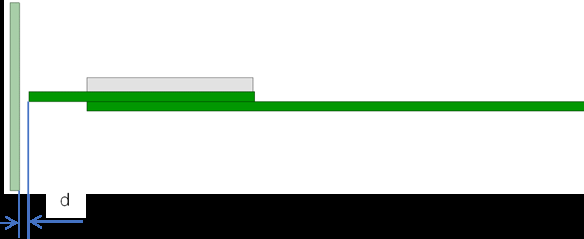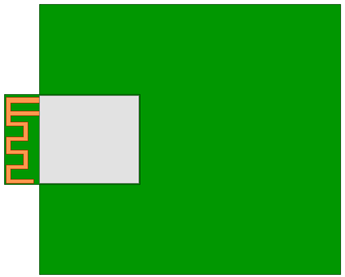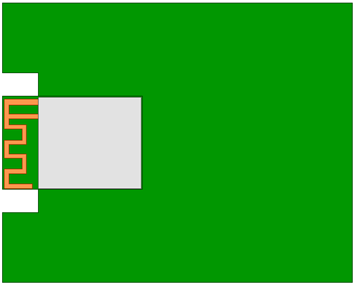BS24-U Series Module
Last Updated on : 2024-06-14 19:02:22download
This topic describes information about implementing serial communication between BS24-U modules and MCUs.
Overview
BS24-U is a series of Bluetooth Low Energy (LE) modules. It consists of a highly integrated EFR32BG24 Bluetooth chip and a few peripheral circuits. It has built-in Bluetooth protocol stacks and a rich set of library functions. The BS24-U is built around a 32-bit MCU with 1024 KB flash and 128 KB SRAM. It has 16 GPIOs. The embedded 2.4 GHz radio supports Bluetooth 5.0 LE.
The following table lists the current and voltage specifications.
| Model | Input voltage (TYP) |
Average current in continuous TX (1 Mbps/+19 dBm) |
Average current in continuous RX (1 Mbps) |
|---|---|---|---|
| BS24-U | 3.3V | 110 mA | 7.3 mA |
| BS24-U-IPEX | 3.3V | 112 mA | 7.9 mA |
For more information, see BS24-U Module Datasheet and BS24-U-IPEX Module Datasheet.
Serial communication protocol
For more information, see Bluetooth Serial Communication Protocol.
Serial communication between module and MCU
-
Connection between a module and a 3.3V MCU

-
Connection between a module and a 5V MCU
In the following circuit diagram, voltage level translation can be implemented with a bidirectional voltage-level translator, a MOS transistor, or a triode.

Level translator
-
N-channel MOSFET level translator
In the following circuit diagram, an N-channel MOSFET and a built-in body diode are used to implement two-way communication.

-
NPN triode level translator
In the following circuit diagram, an NPN triode is used to implement one-way communication.

Design specification
Power supply
- The supply current for 3.3V modules must be greater than the maximum input current. The total capacity of the external filter capacitor should be greater than 10 μF.
- Place the filter capacitors C1 and C2 near the power pin of the module.
- The module and MCU communicate with I/O pins so you cannot power off the module individually. Otherwise, the current from the MCU might flow into the power management system of the module, which causes the module to be stuck.
Pins
- The reset pin or enable pin of the module is a hardware reset pin. The module has internal weak pull-up resistors configured. If the pin is not used, it can float. If a module has been paired, this pin cannot be used to clear pairing information.
- The SWS pin of the module is used for firmware flashing. It is not recommended to use it as GPIO. You can leave it floating or add a pull-up resistor.
- Other unused pins can float.
- For more information, see BS24-U Module Datasheet and BS24-U-IPEX Module Datasheet.
Antenna clearance
-
Do not use metal shells or plastic shells with metallic paint or coating in the direction of the antenna radiation. Do not use metal objects such as screws and rivets near the antenna, which might affect the antenna efficiency.
-
Avoid metal shielding near the antenna. If co-channel interference occurs, you must evaluate the impact on the antenna performance and ensure isolation from interference.
-
Try to increase the distance from the top shell to the antenna to minimize the impact on antenna performance.

-
Try to increase the distance from the upper and bottom shells to the antenna to minimize the impact on antenna performance.

-
Keep the module away from speakers, power switches, cameras, HDMI, USB, and other high-speed signals to avoid interference.
Antenna placement
-
Horizontal placement: We recommend that you place the module at the edge of the backplane with the antenna facing outward.
Flush the module’s GND terminal with the backplane’s GND terminal. Both terminals are fully connected.

-
Embedded placement: Embed the module into the backplane through a slot.
- The slot is flushed with or deeper than the module’s GND terminal.
- The side of the slot must be 15 mm or farther from the module’s board edge.
A wider slot can achieve better performance that is still weaker than that of horizontal placement.

-
Vertical placement: Insert the module vertically into the backplane slot with the antenna facing upward. The module’s GND terminal and the backplane’s GND terminal must be fully connected. We recommend that you keep a clearance distance of 15 mm or more around the antenna.
If the RF antenna of the module is traced along the ANT pin and backplane (the PCB board on which the module is mounted) to connect to the antenna, the RF trace (ANT pin is broken out) on the backplane should be surrounded with ground and designed to provide 50Ω impedance matching. The bottom layer under the RF trace should not be traced to ensure a complete ground plane. If you do not use the companion antenna of the module, you can reserve the π network for antenna matching.
Is this page helpful?
YesFeedbackIs this page helpful?
YesFeedback





